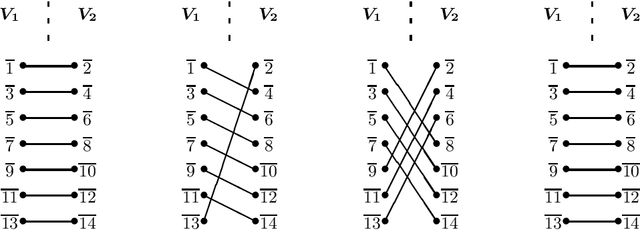Frédéric Maris
Homomorphisms and Embeddings of STRIPS Planning Models
Jun 24, 2024Abstract:Determining whether two STRIPS planning instances are isomorphic is the simplest form of comparison between planning instances. It is also a particular case of the problem concerned with finding an isomorphism between a planning instance $P$ and a sub-instance of another instance $P_0$ . One application of such a mapping is to efficiently produce a compiled form containing all solutions to P from a compiled form containing all solutions to $P_0$. We also introduce the notion of embedding from an instance $P$ to another instance $P_0$, which allows us to deduce that $P_0$ has no solution-plan if $P$ is unsolvable. In this paper, we study the complexity of these problems. We show that the first is GI-complete, and can thus be solved, in theory, in quasi-polynomial time. While we prove the remaining problems to be NP-complete, we propose an algorithm to build an isomorphism, when possible. We report extensive experimental trials on benchmark problems which demonstrate conclusively that applying constraint propagation in preprocessing can greatly improve the efficiency of a SAT solver.
Simple epistemic planning: generalised gossiping
Jun 14, 2016



Abstract:The gossip problem, in which information (known as secrets) must be shared among a certain number of agents using the minimum number of calls, is of interest in the conception of communication networks and protocols. We extend the gossip problem to arbitrary epistemic depths. For example, we may require not only that all agents know all secrets but also that all agents know that all agents know all secrets. We give optimal protocols for various versions of the generalised gossip problem, depending on the graph of communication links, in the case of two-way communications, one-way communications and parallel communication. We also study different variants which allow us to impose negative goals such as that certain agents must not know certain secrets. We show that in the presence of negative goals testing the existence of a successful protocol is NP-complete whereas this is always polynomial-time in the case of purely positive goals.
 Add to Chrome
Add to Chrome Add to Firefox
Add to Firefox Add to Edge
Add to Edge